
A digital marketing strategy is a comprehensive plan that outlines how a business can leverage online resources to reach its target audience and achieve specific business goals.
Crafting a strategy is much like composing music—it requires precision and creativity. A successful digital marketing strategy drives business growth by boosting customer engagement in highly competitive online spaces. Yet, each strategy has its own strengths, weaknesses, and returns on investment (ROI).
In this in-depth guide, I break down the key elements of a successful digital marketing strategy in 2024. I’ll dive into specific examples and focus on building a strong strategy that delivers clear, measurable results.
TABLE OF CONTENTS
- What is a Digital Marketing Strategy?
- Types of Digital Marketing Strategies
- Digital Marketing Strategies Examples
- How to Develop a Strong Digital Marketing Strategy
- Summary
- Digital Marketing Strategies FAQs
What is a Digital Marketing Strategy?
Digital Marketing Strategy Definition
A digital marketing strategy is the blueprint that propels your online presence forward. It’s a holistic plan encompassing key channels to elevate your visibility on the digital stage. This strategic approach meticulously examines your target audience, internal strengths and weaknesses, and the competitive landscape. It’s the groundwork that shapes your digital journey, setting the stage for informed decisions and tactical maneuvers.
Developing a successful digital marketing strategy requires a seamless fusion of empirical data-driven insights and forward-thinking vision. It’s about harnessing a wealth of business data to determine the most potent marketing channels, define your audience more precisely, and articulate your brand’s narrative compellingly. This fusion of analytical depth and creative foresight empowers your strategy to resonate authentically with your audience, translating into impactful digital communication.
More than just visibility, a robust digital marketing strategy is a dynamic roadmap guiding your brand through the labyrinth of the online world. It’s the conduit that communicates your brand’s identity, aspirations, pricing, and offerings in a manner that captivates and resonates. This strategic blueprint isn’t just about being present—it’s about crafting a meaningful digital journey that aligns your brand with its audience, navigating toward digital success with clarity and purpose.
Digital Marketing Strategy VS Digital Marketing Tactics
Within digital marketing, strategy and tactics frequently blend but maintain separate functions.
A digital marketing strategy is the master plan, a detailed blueprint guiding a business toward its digital goals. It’s the panoramic view that shapes success, diving into overarching objectives and charting the path to achieve them.
Digital marketing tactics, on the other hand, are the hands-on actions within this plan, like pieces of a puzzle piecing together the grand strategy. Each tactic is crucial, executing the strategy with precision—sending emails, crafting blogs, engaging on social media, running ads and implementing behavioral economics principles to influence decision making —integral to the overarching plan.
In essence, the strategy acts as the guiding compass, setting the course, while tactics, like sails catching the wind, drive the immediate actions to propel a brand toward digital success. Both are essential, each playing a unique role in achieving a brand’s digital ambitions.
B2B Digital Marketing Stratey VS B2C Digital Marketing Strategy
B2B and B2C digital marketing strategies differ in terms of their target audience, communication modes, and relationship building.
B2B digital marketing strategy involves pitching products to other companies that are looking for ways to make efficiencies and solve problems in their day-to-day workflow or open new avenues of revenue. It may also involve relationship building over time, as businesses make inroads towards additional streams of income from the same company for different products and services. Key messaging for B2B takes a narrow focus on what the product can do for the business.
On the other hand, B2C companies sell to everyday customers. The net cast for B2C digital marketing strategy is much wider than B2B, taking in a greater range of demographics, socioeconomic groups, and tastes. For that reason, B2C marketing takes a much broader approach to its messaging and targeting. Tones of voice, channels of communication, and incentives to buy are likely to differ between campaigns and products much more than they do for B2B marketing.
While both B2B and B2C audiences strive to deliver an authentic, customer-centric experience to the buyer, the approach for each audience is unique, since individual consumers have different purchasing behaviors, attitudes, and needs than business buyers.
Types of Digital Marketing Strategies
Let’s explore the dynamic spectrum of digital marketing strategies. From content that captivates to strategies that spark engagement, this journey unveils the diverse approaches employed by leading brands.
1. Content Marketing
Content marketing is the art of engaging your audience by providing valuable, relevant, and consistent content that addresses their needs and interests. Rather than pushing sales pitches, this digital marketing strategy focuses on nurturing relationships and building trust through informative material, such as:
- Blogs and Articles: Informative, SEO-optimized posts addressing specific topics, industry trends, or solving common issues your audience faces.
- Ebooks: In-depth, comprehensive content often gated behind sign-up forms, providing valuable insights, detailed guides, or extended content on specific subjects.
- Whitepapers: Authoritative reports or guides offering deep insights into industry issues, research findings, or technical solutions.
- Case Studies/Testimonials: Real-life examples showcasing your product/service’s success stories, proving credibility and offering practical insights.
- Infographics: Visual representations of data or information, presenting complex concepts in an easily digestible format, perfect for sharing on social media or in blog posts.
- Interactive Content: Quizzes, polls, calculators, or interactive tools that encourage user participation and engagement.
- Video or Audio Transcripts: Written versions of video or audio content, aiding accessibility, SEO, and providing an alternative format for consumption.
Content marketing delivers: according to statistics, 67% of marketers confirm it generates leads, 72% see it as an educational tool, and 63% affirm its loyalty-building power.
Why choose content marketing? It’s a pathway to credibility and authority in your field. Consistently delivering quality content boosts online visibility, driving organic traffic, and enhancing SEO. Providing value—solving problems, answering questions, offering guidance – establishes your content as a trusted resource, guiding potential leads through their decision-making process and fostering engaging relationships.
Content Marketing KPIs
Unique page views, time on page, bounce rate, social media shares, and conversion rate.
2. Search Engine Optimization (SEO)
Search engine optimization (SEO) stands at the forefront of digital marketing strategies, a meticulous process that fine-tunes your online presence for search engine visibility. It’s a delicate blend of art and science, weaving together various elements to elevate your website’s rank on search engine results pages (SERPs).
According to statistics, organic web listings get 73% of the clicks, but less than 1% of searchers click on the second page of Google results.
At its core, SEO encompasses three fundamental pillars:
- On-Page SEO: This involves optimizing your website’s content, ensuring every written piece, from page titles to product descriptions and blogs, is rich with relevant keywords. It’s about crafting compelling content that resonates with users’ needs and search queries.
- Off-Page SEO: Building external authority for your brand is crucial in off-page SEO. When reputable sources like publications and bloggers link back to your products or services, it boosts your credibility and visibility, amplifying your reach beyond your website.
- Technical SEO: The technical underpinnings of your website play a pivotal role in how search engines index and rank your pages. From optimizing site loading speeds to refining how your product pages are indexed, technical SEO ensures your website is easily navigable and crawlable by search engine bots.
This artistry in optimization hinges on these key components. By strategically incorporating keywords, enhancing user experience, and staying attuned to evolving algorithms, this digital marketing strategy can work wonders in bringing your brand to the forefront of digital landscapes.
SEO KPIs
Organic traffic, keyword rankings, click-through rate (CTR), bounce rate, and conversion rate.
3. Pay-Per-Click (PPC)
Pay-Per-Click advertising, or PPC, is a versatile digital marketing strategy where advertisers pay a fee each time a user clicks on their online ads. It’s a targeted approach, often executed through platforms like Google Ads or Bing Ads, allowing businesses to reach potential customers searching for terms related to their offerings.
Key Aspects of PPC:
- Cost and Scope: PPC campaigns’ costs vary widely, from relatively affordable to substantial monthly expenditures based on campaign size and scope. When discontinued, the generated traffic also halts instantly.
- Directing User Actions: Clicks on PPC ads lead users to dedicated landing pages, prompting specific actions like making purchases, completing forms, or downloading reports.
Why Use PPC?
- Trackable Results: With platforms like Google Ads, advertisers gain real-time insights into ad views, clicks, and conversion rates, providing instant campaign performance data.
- Flexible Spending: PPC operates on a pay-as-you-go model, allowing adjustments or pausing of underperforming campaigns without binding advertising spends.
- Immediate Impact: Unlike strategies like SEO or content marketing that take time to yield results, PPC delivers quick outcomes upon campaign setup.
PPC isn’t limited to search engines but extends to social media networks and various advertising channels. It’s a highly targeted approach allowing businesses to refine their budget and messaging while accessing valuable data for refining marketing strategies.
Based on research, 50% of people arriving at a retailer’s site from paid ads are more likely to buy than those who came from an organic link, highlighting the substantial impact and conversion potential of well-crafted PPC campaigns.
PPC KPIs
Click-through rate (CTR), cost per click (CPC), conversion rate, and quality score.
4. Account-Based Marketing (ABM)
Account-Based Marketing (ABM) stands as a strategic approach empowering B2B marketing teams to meticulously target and engage specific accounts or key decision-makers within those accounts. Unlike traditional broad marketing, this digital marketing strategy adopts a personalized approach to cater to the unique needs and preferences of targeted high-value accounts.
94% of B2B marketers currently utilize Account-Based Marketing in their strategies. Additionally, companies allocate 29% of their total marketing budget specifically to ABM initiatives, highlighting its significance in modern B2B marketing approaches.
Key Aspects of ABM:
- Personalization for Precision: ABM transcends generic marketing strategies by tailoring messaging and campaigns for selected target accounts. This personalized approach leverages insights about the customers to create tailored content that resonates with their specific needs and challenges.
- Synergy between Sales and Marketing: Collaboration is at the core of ABM, fostering alignment between sales and marketing teams. Together, they identify key accounts and craft personalized campaigns, focusing efforts on nurturing relationships and moving accounts swiftly through the sales pipeline.
- Accelerated Sales Cycles: Traditionally, B2B sales cycles tend to be lengthy due to multiple stakeholders involved in decision-making. ABM mitigates this by concurrently nurturing primary decision makers and other stakeholders with tailored content, expediting the sales process.
ABM KPIs
Account engagement, account conversion rate, sales cycle length, and customer lifetime value (CLV).
5. Email Marketing
Email marketing is a powerful cornerstone of digital marketing strategies, engaging potential and existing customers directly. It nurtures leads, builds brand loyalty, and promotes products or services through tailored emails, fostering brand awareness and encouraging repeat purchases.
Why choose email marketing?
- Companies generate an average of $36 for every U.S. dollar spent, with retail, ecommerce, and consumer goods seeing the highest ROI at $45.
- This approach isn’t solely about messages but about fostering relationships. Tailoring content and segmenting audiences enhance relevance and engagement, from exclusive deals to industry insights.
Email marketing tracks performance metrics, providing valuable insights like open and click-through rates for continual strategy improvement. Integrating automation boosts efficiency, enabling precise segmentation to meet diverse customer needs.
Crafting successful email campaigns relies on key practices: segmenting audiences for relevance, optimizing for mobile accessibility, and refining content through A/B testing.
This digital marketing strategy excels due to its exceptional ROI, personalization, and measurable impact, serving as an indispensable tool for engaging customers and driving business growth.
Email Marketing KPIs
Open rate, click-through rate (CTR), conversion rate, bounce rate, and unsubscribe rate.
6. Social Media Marketing
Social media marketing has become a linchpin in modern brand strategies. Leveraging platforms like Facebook, Twitter, LinkedIn, and Instagram, it doesn’t just promote products and services but builds brand loyalty and engagement while driving website traffic. Its potential lies in creating lasting connections with the 45% of the global population spending hours daily on these platforms.
Statista’s 2023 research indicates a whopping 4.89 billion global social media users, with daily usage peaking at 151 minutes. Over the past year, the user base increased by 137 million, marking a 3% growth rate from 2022 to 2023.
The impact of this digital marketing strategy transcends mere advertisement distribution. It’s a pathway to community building, fostering engagement, and cultivating brand advocates who champion brands organically. Each channel demands its own strategy, yet all seek the same goal: meaningful connections and engagement.
Social media marketing isn’t just about posting content; it’s about creating meaningful connections. Engaging your audience directly, through comments, messages, and discussions, fosters loyalty, enhancing brand perception and encouraging recommendations.
The true essence of social media marketing isn’t just about visibility; it’s about establishing an enduring relationship between brands and their communities. It’s a dynamic landscape where digital marketing strategy meets interaction, offering a unique platform for two-way communication and fostering conversations that matter.
Social Media Marketing KPIs
Impressions, engagement rate, reach, click-through rate (CTR), conversion rate, and follower growth rate.
7. Video Marketing
Video marketing emerges as a dynamic force, driving brand engagement and outreach across diverse platforms. From product demos to customer testimonials, videos craft compelling narratives, forging a stronger connection with audiences.
Why opt for for video marketing within your digital marketing strategy?
- SEO Amplification: Integrating videos on websites boosts SEO, elevating your visibility on Google by 53 times and driving organic traffic.
- Engagement Surge: Video-rich landing pages witness a 34% rise in conversions, leading to a 139% increase in brand association. What’s more, 92% of viewers share these impactful videos, extending their reach.
- Memorable Impact: Videos foster stronger connections, making content more memorable and emotionally engaging.
Across platforms like TikTok and Instagram Reels, videos offer a personal touch, delivering extensive information in concise formats while showcasing brand creativity.
Video marketing seamlessly integrates into content and email marketing strategies, delivering compelling results for your digital marketing strategy.
Video Marketing KPIs
View count, engagement rate, click-through rate (CTR), conversion rate, and social media shares.
8. Affiliate Marketing
Think of affiliate marketing as the modern twist on word-of-mouth advertising. It’s a collaboration where outside individuals or companies promote your products, earning a commission for each successful sale linked to their efforts. This shared partnership aims to reduce marketing costs and broaden outreach, but it does place your brand’s image in someone else’s hands, demanding careful monitoring.
Picture this: a social media user excitedly shares a link to a favorite product, raving about its benefits and uniqueness within your digital marketing strategy. If others click that tracked affiliate link and make a purchase, the company gains a sale while the sharer earns a commission. This approach has become a go-to strategy for businesses, with 90% acknowledging its pivotal role in their digital marketing strategy playbook.
Affiliate marketing wields significant influence: driving 16% of all U.S. internet orders and being employed by 81% of brands to enhance brand visibility and sales. Additionally, it stands as a top revenue source for 31% of web publishers, emphasizing its pivotal role in monetization strategies.
Affiliate marketing isn’t just about promoting products. It’s a revenue-sharing model benefiting both parties. Whether you’re the promoter or the business, the concept remains consistent. From reviewing products for a single company to collaborating with various merchants, the versatility is vast.
For both retailers and affiliates, the first step involves establishing connections through dedicated digital platforms or programs. Retailers need to equip their affiliates with the right tools and incentives, fostering success. Moreover, affiliate marketing is open to everyone—from customers to influencers, blending seamlessly with other strategies like influencer marketing to widen audience reach.
Affiliate Marketing KPIs
Click-through rate (CTR), conversion rate, average order value (AOV), and commission rate.
9. Influencer Marketing
Embracing the power of influencer marketing within your digital marketing strategy is like unlocking a direct pathway to your audience’s hearts. Imagine partnering with experts or celebrities whose values align with your brand, creating a ripple effect of trust among their followers. It’s more than a trend—it’s a proven strategy that’s reshaping digital marketing strategy landscapes.
Influencer marketing has surged into a $21.1 billion industry, marking a substantial 29% growth from its previous valuation of $16.4 billion.
Why consider influencer marketing within your digital marketing strategy?
- Numbers Speak: Over 90% of marketers acknowledge its potency their digital marketing strategy, ranking it equal to or even better than other channels. For half of female consumers, influencer recommendations directly sway their purchase choices. With nearly half of social media users relying on influencer-endorsed brands, this approach is a goldmine for engagement and sales amplification.
- The Power Pack: Influencer marketing isn’t just about product promotion; it’s a content creation dynamo. By collaborating with influencers, brands tap into their creativity, crafting authentic, relatable content that resonates deeply with their audience. It’s not just exposure; it’s about crafting trust and credibility, bolstering brand perceptions and converting potential buyers into loyal customers.
- Choosing the Right Fit: It’s not about follower count alone; engagement and alignment with your brand’s ethos matter. From events and social takeovers to unique content commissions, influencer collaborations offer a myriad of possibilities to connect with your audience in a meaningful way. It’s not just about the influencer; it’s about the shared journey toward mutual success.
Remember, like any partnership, the right influencer can open doors to new horizons, but choosing the wrong one might cast a shadow on your brand’s reputation. The key lies in the synergy, the shared beliefs, and the authenticity of the connection between brand and influencer.
Influencer Marketing KPIs
Engagement rate, reach, click-through rate (CTR), conversion rate, and follower growth rate.
10. Podcast Marketing
Poscast marketing is witnessing a surge, evident in the rapid growth of platforms like Spotify and Twitter Spaces competing for market dominance. These platforms, though distinct from traditional podcasts, share the essence of engaging and educating audiences while they’re on the move, requiring just an audio-enabled device.
The impact of audio content is evident in its statistics: with 464.7 million global podcast listeners, making up about 22% of internet users. Between 2022 and 2023, this number surged by over 40 million. Experts predict that by the close of 2024, the count will soar to about 504.9 million, underlining their rising influence in the digital landscape.
Podcasts have swiftly become a cornerstone of digital marketing strategy, enabling outreach across diverse platforms beyond search engines and social media. The medium exudes an unplanned, natural essence, demanding thoughtful episode planning to deliver content tailored to the audience’s needs.
Key benefits of podcasting in the digital marketing startegy:
- Expanded Discoverability: Hosting podcasts across platforms like Spotify, Apple Podcasts, and Stitcher amplifies brand reach. Transcribing podcasts into SEO-friendly transcripts and inviting guest speakers further broadens audience engagement.
- Authentic Interaction: Embracing a conversational tone, podcasts foster genuine connections, establishing a unique bond between content creators and listeners.
- Sustainability and Adaptability: With enduring relevance, podcasts serve as evergreen content, readily repurposable into diverse content forms such as blog posts, videos, and ebooks, extending their value.
- Convenient Accessibility: Providing an on-demand medium suitable for the on-the-go audience.
- Cost-Effectiveness: Producing audio content is simpler and more economical than video.
Podcast Marketing KPIs
Downloads, listener retention rate, click-through rate (CTR), conversion rate, and social media shares.
11. Chatbot Marketing
Chatbots, a pivotal force in modern digital marketing strategy and customer service, engage with 1.4 billion messaging app users. They handle complaints, offer product details, and promote events, but simplicity remains key, especially during emergencies.
Their benefits:
- Swift Solutions: Quick answers elevate brand sentiment by addressing tasks promptly.
- Enhanced Experiences: Detailed explanations and links to human support elevate brand interactions.
- Sales Support: Despite initial doubts, chatbots facilitate purchases and idea exploration, resonating with users’ buying preferences.
Despite their advantages, chatbots have notable limitations within digital marketing strategies. They lack empathy, affecting their handling of sensitive interactions. Their technical complexity and reliance on technology can lead to glitches, impacting user experiences. Acknowledging user preferences for human interaction highlights varying customer service needs.
Despite these considerations, the chatbot industry showcases rapid growth, projected to soar to $239.2 million by 2025 from $137.6 million in 2023. Notably, their potential to save billions of customer service hours underscores their role in streamlining operations and elevating user experiences within businesses and their digital marketing strategies.
Chatbot Marketing KPIs
Response time, conversation completion rate, customer satisfaction rate, and conversion rate.
Digital Marketing Strategies Examples
In the section, I delve into real-life examples from top brands, enabling you to explore how they’ve mastered different digital marketing strategies, revealing diverse approaches that captivate audiences and drive remarkable success stories.
1. Monday: Content Marketing Example
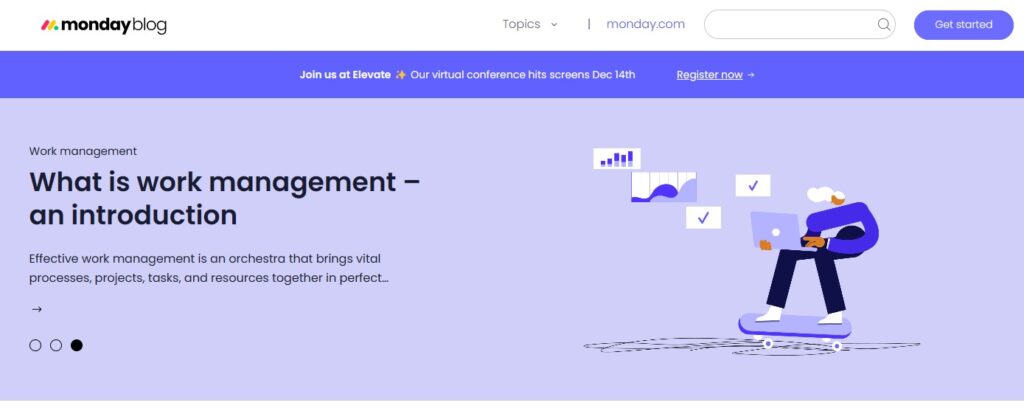
Monday’s Project Management blog is packed with stories and advice to elevate project managers and teams.
The blog covers everything from project management software insights to best practices, work management, CRM, and more.
For instance, a top-performing post, ‘What is the RACI Model?‘, attracts over 26K organic visitors monthly, showcasing its popularity.
2. Healthline: SEO Example

Healthline, a standout in the health niche, showcases unparalleled success in this marketing strategy, boasting a domain authority of 87 and drawing over 882 million organic monthly visitors. This giant’s prowess extends to competitive keywords like “Dragon Fruit,” with a monthly search volume of 450K, where an article (“What Is Dragon Fruit and Does It Have Health Benefits?“) secures the top spot, drawing over 233K monthly visits despite its challenging ranking at 72.
Healthline’s forte lies in crafting templated yet unique content that perfectly aligns with diverse search intents, setting a benchmark in digital marketing strategy within the health domain. Their ability to dominate multiple search positions without cannibalization, coupled with a focus on user engagement and robust Expertise, Authoritativeness, and Trustworthiness (E-A-T) principles, makes Healthline a prime model for digital marketing strategy and SEO excellence.
3. HiBob: PPC example
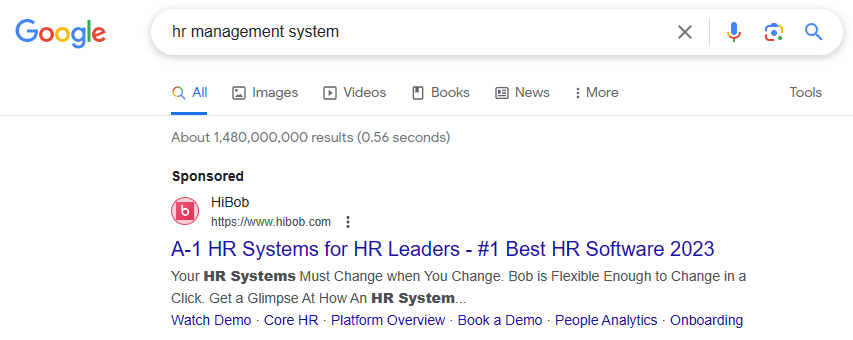
In a shrewd example of PPC implementation for digital marketing strategy, HiBob strategically positions itself within the competitive landscape of HR management systems through Google Ads. When users search for ‘hr management system’, HiBob secures prime visibility with a sponsored ad displayed prominently.
The title boldly asserts, “A-1 HR Systems for HR Leaders – #1 Best HR Software 2023,” instantly communicating its top-tier status in the industry. The accompanying description, strategically crafted with the keyword ‘HR System’, succinctly highlights HiBob’s adaptability: “Your HR Systems Must Change when You Change. Bob is Flexible Enough to Change in a Click. Get a Glimpse At How An HR System…” This astute PPC utilization not only captures attention but also positions HiBob as an adaptable and forward-thinking solution, enticing potential users to delve deeper into its offerings.
4. Snowflake: ABM Example

Snowflake‘s rise during turbulent times owed much to their precise 1:1 Account-Based Marketing (ABM) strategies, an integral part of their digital marketing strategy. Post-IPO, they merged technology and teamwork to maintain their enterprise status.
Their approach was straightforward: revamp the customer journey using optimized campaigns. Snowflake identified prospects through conversations and intent data, engaging via RollWorks, LinkedIn, direct mail, and Uberflip. Integration was pivotal; aligning ABM across functions surged SDR meetings by 75%.
Efficiency was key. Streamlining 2000+ campaigns ensured uniformity. Snowflake’s ABM legacy isn’t just a success story; it’s a testament to growth through cultural integration and strategic technology use.
5. Statista: Email Marketing Example
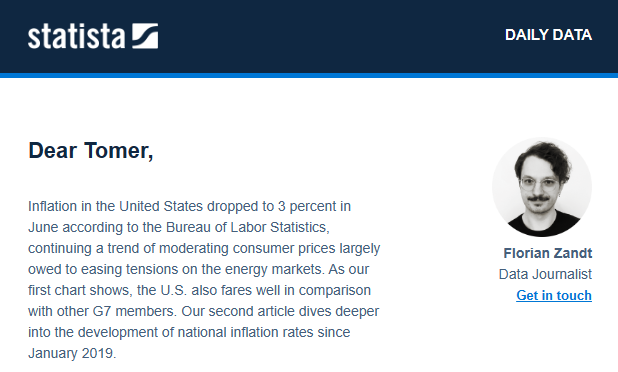
Statista‘s email marketing is anchored in a daily dissemination of enriching data and charts, ensuring subscribers receive a consistent stream of valuable insights. Their newsletters boast a treasure trove of intriguing statistics and graphics, captivating readers with diverse information.
The strategic placement of their subscription offer at the email’s conclusion smartly nudges engagement. However, while the content is consistently informative and visually appealing, the challenge of this digital marketing strategy arises in tailoring content to individual subscriber interests. Despite this, Statista’s newsletters serve as a go-to source for a wealth of industry insights, making them a valuable resource for the data-hungry audience, particularly within their overarching digital marketing strategy.
6. Death Wish Coffee: Social Media Marekting
With a robust following of 300k, Death Wish Coffee nails hard-hitting humor intertwined with genuine insights into their coffee craft. Their digital marketing strategy approach sets a prime example for brands aiming to connect deeply with their audience.
Key points: Humor in marketing is a potent tool; don’t shy away from injecting it into your content. Embracing an in-your-face tone, Death Wish’s bold memes align perfectly with their brand message.
Additionally, their peek into the brewing process adds a personal touch, underscoring their small-scale beginnings. Sharing such behind-the-scenes moments can forge a strong emotional link with your audience.
7. Kodiak Cakes: Video Marketing Example
Kodiak Cakes presents a remarkable example of video marketing success with their low-budget production that garnered an astounding 5 million views on YouTube. This particular video, regarded as a standout in classic product marketing, captivates viewers with its visual appeal. The enticing flow of syrup in the video creates an irresistible urge to reach out and savor the taste, particularly appealing to those with a sweet tooth.
The compelling imagery not only evokes a sensory experience but also effectively influences purchasing decisions, driving potential customers towards buying the syrup after being drawn in by the video’s allure. This digital marketing strategy adeptly leverages sensory appeal to enhance engagement and drive consumer actions, highlighting the potency of visual storytelling in influencing product purchases.
8. AppSumo: Affiliate Marketing Example
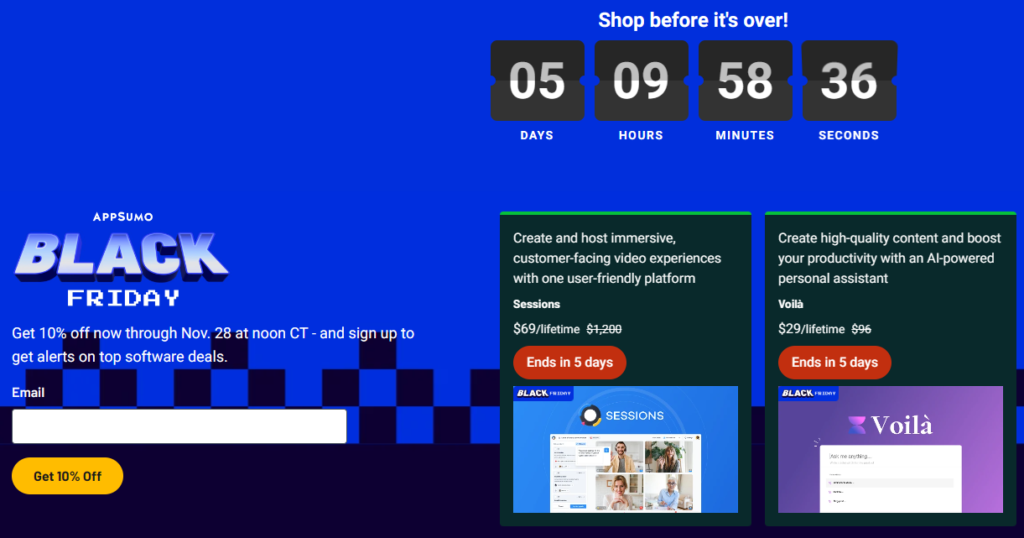
AppSumo is a popular platform, and a large part of their digital marketing strategy is built on affiliate marketing. The company offers users access to software and SaaS services at competitive prices. They use affiliate marketing to promote their products and earn commissions from software companies for every sale.
In addition to their website, AppSumo also uses affiliate links in their email newsletters to promote their products. Visitors become subscribers and buyers of services recommended by AppSumo due to the site’s high traffic volume, popularity, and trust.
AppSumo’s affiliate program is another way they promote their products as part of their digital marketing strategy. By sharing tools they genuinely love via a custom tracking link, affiliates earn a kickback on every sale they drive that results from their own marketing efforts. In doing so, they’re not only creating a new income stream for themselves but also providing valuable resources for their audience.
9. Kfir Ochaion (Kfiro) : Influencer Marketing Example
Kfir Ochaion is a popular influencer in the guitar industry with over 2 million subscribers on YouTube and almost 900K followers on Instagram. He is known for his amazing guitar playing skills, and his videos are watched by millions of people. Guitar companies use Kfiro’s influence to promote their products through influencer marketing.
By implementing influencer marketing in his digital marketing strategy, kfir promotes guitars by playing specific guitars that the companies provide him with a deal he makes with. This digital marketing strategy helps guitar companies reach a wider audience and increase their sales. For example, in the Instagram reel above, Kfiro is seen playing a guitar while promoting it. This is an excellent example of how influencer marketing can be used to promote products and reach a wider audience.
10. ARK Invest: Podcast Marketing Example
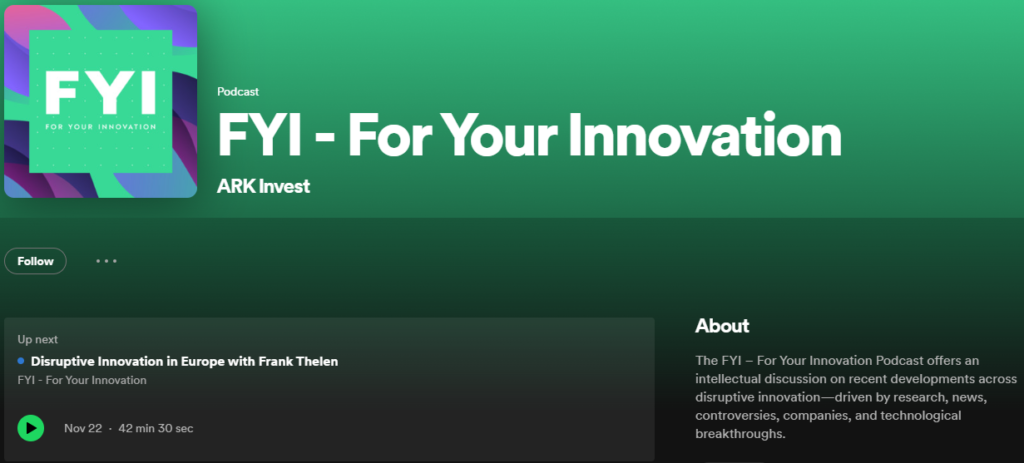
ARK Invest is a company that focuses on disruptive innovation and offers investment solutions to investors seeking long-term growth in the public markets. They have a podcast series as part of their digital marketing strategy that features discussions on various topics such as market trends, and disruptive technologies. The podcast series is an excellent example of how ARK Invest uses content marketing to promote their brand and reach a wider audience.
By providing valuable insights and information on topics related to their business, ARK Invest is able to establish themselves as thought leaders in the industry. This digital marketing strategy helps them build trust with their audience and attract potential customers.
11. Chatbot Marketing Example

Lemonade is an insurance company that uses chatbots as part of its digital marketing strategy. The company’s chatbot handles sales and support requests from start to finish, with the ones it can’t handle sent to the claims team. Lemonade’s chatbot is an excellent example of how chatbots can be used to provide quick solutions and information to customers, leading to a positive customer experience.
By using chatbots, The company is able to save time and resources while serving more customers. Lemonade’s chatbot also helps manage the company’s reputation by providing a personalized experience by segmenting inbound traffic based on the customer’s needs.
How to Develop a Strong Digital Marketing Strategy
Let’s explore how to craft a robust digital marketing strategy step by step: defining goals, understanding buyer personas, auditing assets, creating a content plan, strategizing distribution, and measuring performance indicators (KPIs) for ongoing refinement.
1. Define Goals
Setting the course for a successful digital marketing strategy involves creating clear and measurable goals. Ensure these goals align with your business objectives and follow the SMART criteria—specific, measurable, achievable, relevant, and timely.
By focusing on specifics, such as revenue targets and traffic growth, and leveraging tools for precise measurement, you pave the way for a strategic and impactful approach. Conduct thorough research, analyze competitors, gather audience feedback, and gradually implement digital channels to inform your goals and set realistic benchmarks that drive your strategy forward.
2. Identify Buyer Personas
Creating buyer personas for your digital marketing strategy requires an intricate blend of understanding and research, painting vivid portraits of your ideal customers. These personas are more than just fictional characters; they embody the desires, challenges, and nuances of those most likely to engage with your offerings.
Combining quantitative data like demographics and location with qualitative insights such as goals, challenges, and interests, you sculpt these personas into tangible representations of your target audience. Through surveys, interviews, and mining existing consumer reports, you unveil the intricate layers of your audience’s motivations and pain points.
These personas become guiding stars, illuminating the path toward tailored digital marketing strategies that deeply resonate with different segments of your audience. Crafting these personas isn’t just about envisioning your ideal customers; it’s about sculpting a strategy that speaks directly to their hearts and minds, ensuring a connection that sparks meaningful engagement and fuels your business growth.
3. Audit Your Existing Digital Assets
When crafting a potent digital marketing strategy, examining your digital assets is key. Begin by meticulously cataloging and evaluating each asset—categorizing them into owned (company website and social media profiles), earned (reviews and word-of-mouth referrals), and paid media (Google Ads, sponsored social media posts)—to grasp their individual impact. Consider conducting focused audits, like a comprehensive SEO assessment, to delve into performance metrics, detect gaps, and outline improvement strategies.
It’s crucial to link these assets to overarching revenue goals, mapping their contribution to understand which channels drive success. By prioritizing and leveraging successful avenues and exploring new opportunities, you can fine-tune your digital marketing strategy for optimal impact.
These audits offer invaluable insights, empowering you to refine existing digital marketing strategies by optimizing what’s effective and innovating in weaker areas. Harness the strengths of successful elements while exploring innovative tactics, ensuring a more robust and impactful marketing blueprint for future endeavors.
4. Conduct Competitor Analysis
Conducting a competitor analysis is an essential step in developing a strong digital marketing strategy. By understanding the digital landscape and analyzing your competitors, you can gain valuable insights into their strategies and identify opportunities to differentiate yourself from the competition.
Some of the key components of conducting a competitor analysis include identifying which competitors are bidding on relevant keywords you’d like to target, how competitors are messaging their target audience, which channels competitors are advertising on, how competitors rank organically compared to you, and how much competitors’ monthly digital ad budgets are.
Third-party tools like Ahreffs, Semrush, SpyFu, Google Keyword Planner, Similarweb and Google Trends can help answer many of these questions. However, it’s important to note that the information provided by these tools cannot be guaranteed 100% accurate and should be used as a guide, not as an absolute.
By conducting a thorough competitor analysis, you can gain valuable insights into your competitors’ strategies and use this information to refine your own digital marketing strategy. This will help you differentiate yourself from the competition and achieve your business goals.
5. Develop a Content Creation Plan
Developing a comprehensive content creation plan requires meticulous consideration and a clear roadmap. At its core, digital marketing strategy thrives on owned media, predominantly conveyed through various content forms—be it website pages, blog entries, ebooks, infographics, podcasts, or social media posts. This content not only enhances brand presence but also converts visitors into leads and customers, especially when strategically optimized for search engines to bolster organic traffic.
To embark on this journey, begin with an audit of your existing content, assessing each piece’s performance against current goals. This assessment helps unveil what’s effective and what needs improvement, serving as a blueprint for future content planning as part of your digital marketing strategy. Identify gaps aligned with your buyer personas to ensure your content meets their specific needs and challenges. For instance, a math tutoring company discovering a demand for study-related content might plan an ebook on effective study methods.
Craft a detailed content creation plan based on these insights, outlining titles, formats, goals, promotional channels, and the rationale behind each piece. This plan acts as a roadmap, guiding content creation efforts and aiding in resource allocation, whether in-house or through outsourcing. A well-structured spreadsheet capturing this information, along with budget estimates or timeframes, streamlines the content creation process, ensuring a strategic and purpose-driven approach to achieving marketing goals.
6. Create Distribution Plan
When creating a distribution plan for your digital marketing strategy, it’s important to consider how you will distribute your content. The main consideration is whether you consider the content to be owned, earned, or paid. Owned channels include your website, blog, email, and social media accounts. Earned content is content that others share, like, comment on, or write about. Paid content is content that you have paid to promote, such as PPC and influencer marketing.
Most digital marketing strategies will use a blend of each of these approaches. For example, you can use SEO-focused blog content on owned channels such as your website, earned social shares and coverage with PR-focused content, and put budget behind paid influencer content. By using a combination of these approaches, you can maximize the reach of your content and increase your chances of success.
7. Measure KPIs
Measuring the effectiveness of your digital marketing strategy is crucial to its success. Key performance indicators (KPIs) are measurable values that help you gauge the effectiveness of your strategy and tactics. Examples of KPIs include digital conversion rates, cost per lead, returning website visitors, click-through rates, and customer lifetime values. By identifying and tracking these KPIs, you can gain valuable insights into how your digital marketing strategy is performing and make data-driven decisions to improve your results.
Once your digital marketing strategy concludes, it’s important to hold a wash-up meeting with all relevant parties to share data around its successes and failures. This information can feed into future digital marketing strategy planning and help you refine your approach.
Summary
Digital marketing strategy is a constantly evolving field that requires businesses to create engaging content, keep an eye on competitors, and leverage their network and expertise to drive results.
A well-defined digital marketing strategy is a superpower that can amplify online presence, forge authentic bonds with the audience, and achieve significant outcomes. It gives everyone in the company the foundation to prioritize marketing activities that will take the online store to new heights and bring results time and time again.
Therefore, businesses should stay consistent, keep their ear to the ground for trends and changes, adapt if and when they need to, and be patient as they work towards enduring success in today’s fiercely competitive online arena.
Digital Marketing Strategy FAQs
What Are the Benefits of Digital Marketing Strategies?
The benefits of digital marketing strategies encompass wide-reaching advantages for businesses. By tapping into a broader audience globally, minimizing costs compared to traditional marketing, achieving measurable and quantifiable results, fostering deeper connections with customers in real-time, and facilitating immediate customer actions, such strategies offer enhanced flexibility, customer engagement, and streamlined conversions.
Moreover, these digital marketing strategies allow for a more integrated view of campaigns, utilizing advanced attribution modeling to pinpoint successful channels, understand audience preferences, and make informed decisions, ultimately driving brand awareness, engagement, and revenue growth across multiple platforms.
What Type of Content Should I create for My Digital Marketing Strategy?
When crafting content for your digital marketing strategy, it’s vital to align with your audience’s needs at various stages of their journey.
For the awareness stage, consider blog posts, infographics, and short videos. Blog posts, when optimized with a strong SEO strategy, bolster organic traffic, while infographics, due to their shareability, amplify visibility on social media. Short videos, especially when hosted on platforms like YouTube, enhance discoverability among new audiences.
Moving to the consideration stage, delve into formats like ebooks, research reports, and webinars. Ebooks and research reports, being more comprehensive, are powerful for lead generation. Webinars, offering interactive and detailed content, stand out as an effective consideration stage format.
Finally, at the decision stage, leverage case studies and testimonials. Detailed case studies positively influence purchase decisions by showcasing success stories, while testimonials—whether in written or visual form—reinforce trust and credibility, encouraging potential buyers to make that final leap.
What is The Future of Digital Marketing Strategies?
Digital marketing strategies are an ever-evolving field, and it’s important to stay up-to-date with the latest trends to remain competitive. While it’s difficult to predict the future with certainty, there are some key digital marketing trends that are likely to emerge in 2024 and 2025.
1. The increasing use of artificial intelligence (AI) and machine learning (ML) in digital marketing strategies. AI and ML can help businesses analyze large amounts of data and gain valuable insights into customer behavior. This can help businesses create more personalized and targeted marketing campaigns that are more likely to resonate with their target audience.
2. The increasing importance of voice search optimization. With the rise of smart speakers and voice assistants, more and more people are using voice search to find information online. Businesses that optimize their content for voice search are more likely to rank higher in search engine results pages (SERPs) and attract more traffic to their website.
3. Privacy-focused marketing is likely to become more important when crafting a digital marketing strategy. With the increasing focus on data privacy and security, businesses that prioritize privacy in their marketing campaigns are more likely to build trust with their customers and attract more business.
What is the Importance of Digital Marketing Strategy?
A digital marketing strategy holds immense importance due to its precision in reaching the right audience, cost-effectiveness, and real-time adaptability. It empowers businesses, big or small, to compete effectively, measure impact, pivot swiftly, and engage with potential customers at every stage of their journey. This strategy isn’t just about visibility; it’s about influencing purchase decisions, respecting individual preferences, and ensuring businesses stay agile in a dynamic digital landscape.